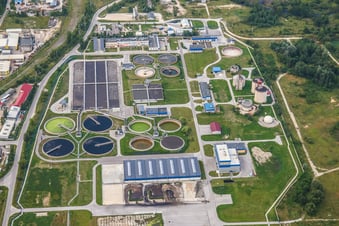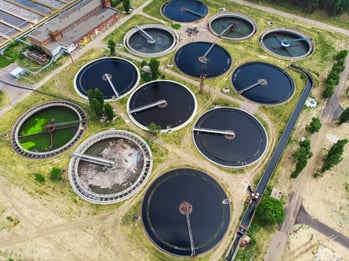When your primary focus is sewer inspections, it’s easy to lose sight of wastewater’s intended destination: a treatment plant. Wastewater treatment is the process of removing organic and inorganic matter, chemicals and other pollutants from water, ensuring it is clean and safe for discharge into the local environment.
The treatment process has several steps, with the water flowing from one to the next via controlled pumping systems. Artificial intelligence (AI) has helped wastewater professionals model and optimize performance of each step to lower energy consumption and operation costs. A well-tuned treatment plant can process as many as 14 million gallons of wastewater per day, but first, the influent must navigate each segment of the treatment plant and be tested against local effluent regulations.

As influent arrives at the treatment plant, it first goes through the bar screening process. Screens remove large objects and material from the influent to prevent them from damaging the equipment inside the plant. Once the materials are collected, they are usually transported to a landfill.
Fine Grit Screening
After bar screening, influent is pumped through a much finer screen, where waste material is drawn to the bottom of a tank and extracted. This, along with the bar screening, ensures that no solids interfere with later purification processes.
Primary Clarifier
Organic materials fall to the bottom of a large tank, where they are diverted to a different area of the plant for processing, drying and disposal. During this process, up to half of the solids in the wastewater are removed. Achieving perfect water flow is key in the primary clarifier, as the solids need a slow enough flow to sink to the bottom but fast enough that it doesn’t affect other areas of the treatment process.
Aeration
Arguably the most important part of the wastewater treatment process, aeration involves pumping air into the water to encourage the natural growth of bacteria. The air converts ammonia into nitrate, which fuels bacteria growth and thus, the breakdown of organic material. Because of the mechanical methods used for aeration, this is often the most energy-intensive part of the wastewater process. This has led to the adoption of AI technology in aeration system control and performance modeling, reducing operating costs and optimizing energy consumption. In some cases, AI has been able to reduce plant-wide energy use by up to 25%.

Secondary Clarifier
As the water flows through the secondary clarifier, any fine organic matter falls away. Much of this is activated sludge, which contains the bacteria used in aeration. This activated sludge is sometimes recycled back into aeration, while the rest is pumped out for drying.
Disinfection
This is a process during which remaining bacteria is killed off via chlorination, UV light or ozone. Because chlorination is the most cost-effective method, it is also the most common, but chlorination methods require additional testing to ensure the chlorine is at safe levels for discharge.
Testing and Effluent Discharge
Clean effluent is released back into the environment. To ensure the effluent complies with local laws, testing of effluent is required as the last part of the treatment process. Testing helps to determine any adjustments the plant may need to make.
Learn how WinCan wastewater inspection software can help sewer inspection teams keep wastewater flowing smoothly to treatment plants:





